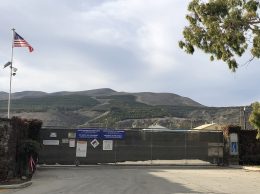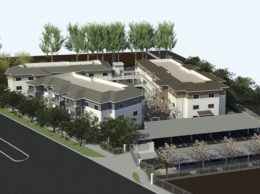Dubroff: Tri-county tourism slow to bounce back but wait ’til next year
IN THIS ARTICLE
- Columns Topic
- Henry Dubroff Author
By Henry Dubroff Friday, June 8th, 2018

Henry Dubroff
When it comes to the 2018 tourism season, evidence suggests a lingering impact from the Thomas fire and mudslides, with many people I talk to thinking that a full rebound may not take place until 2019.
If my sources are correct, the region will get a big jolt next season with the anticipated late-December soft opening and early 2019 full opening for the Rosewood at Miramar Beach Resort, the Rick Caruso project that’s been in the works for years and whose opening was pushed back from late summer to end-of-year because of delays related to the Thomas fire.
These days construction is going full-tilt at the Miramar, and Caruso community relations guru Rick Lemmo told me he’s spending a couple of days a week in the Santa Barbara area.
South Coast merchants were breathing a sigh of relief just after Memorial Day when the Four Seasons Biltmore reopened after closing for months in the wake of mudflow damage in January.
The Biltmore is a gateway for merchants and restaurant owners on Coast Village Road and in downtown Santa Barbara,’ but its residents spend money throughout Santa Barbara and San Luis Obispo counties.
Based on conversations with a number of hoteliers and restaurant owners it is clear that there are lingering questions about air quality and even whether Highway 101 is open that will only be addressed with the passage of time.
The region has been hit particularly hard by the cancellation of one-time events such as weddings in the aftermath of the Thomas fire and the worldwide news coverage of the mudslides and evacuations.
When things finally settle down, the landscape for tourism will have been permanently altered. Ventura and Channel Islands Harbor are welcoming new hotels that will have much broader appeal to families and middle class vacationers than the existing lineup of properties, making Ventura County beaches much more competitive for Los Angeles visitors.
Santa Barbara’s offerings will be at the higher end of the price scale, but many visitors may skip over State Street and spend discretionary dollars in the Santa Ynez Valley or split their trip between the South Coast and San Luis Obispo. The migration up market was underscored by the upgrading of the Fess Parker Doubletree to a Hilton and the formerly un-flagged Bacara Resort & Spa to a Ritz-Carlton branded property under the Marriott banner.
What that means for Santa Barbara’s struggling State Street — once a shopping mecca for out-of-towners — is a big question.
Meanwhile, SLO County continues to attract boutique hotels to its increasingly attractive wine country destinations and the higher profile of the San Luis Obsipo Regional Airport is making it a destination in its own right.
The entrepreneurial folks at California Lutheran University’s School of Management have taken note of the longer-term rise in prospects for hotel management jobs and are fast tracking the launch of a hospitality degree program at the Thousand Oaks campus. Given the fact that there are plenty of wealthy hotel owners and operators in the area, it may become a major fundraising opportunity as well.
And it would not surprise me to see other universities follow suit, perhaps building boutique hotels on their campuses as learning centers and revenue sources.
During a trip to Los Angeles recently, I got an update on the multi-billion dollar effort to improve mass transit access and ease clogged roads around Los Angeles International Airport. It’s a big undertaking that will take years and I remain a skeptic about whether any amount of money can fix what’s wrong with LAX. But over the long run, anything that makes LAX more accessible, especially from mass transit, will have knock on effects for Central Coast flyers and visitors.
So will the widening of Highway 101 through Montecito, now a done deal, but a project that won’t be completed until the early 2020s.
Coming up on six months after the devastating events of December and January, it’s becoming clear that the Thomas fire will be one of those demarcation points for the travel and tourism industry on the Central Coast. Changes that were in the works beforehand will have a bigger impact afterward, and the disruptions caused directly by the fire and mudslides will linger longer than a single season.
The pace of change in the biggest industry on the Central Coast will quicken, and those who cannot adapt will be left behind.
• Contact Editor Henry Dubroff at [email protected].
Related Articles
 Friday, October 14th, 2022
Friday, October 14th, 2022










